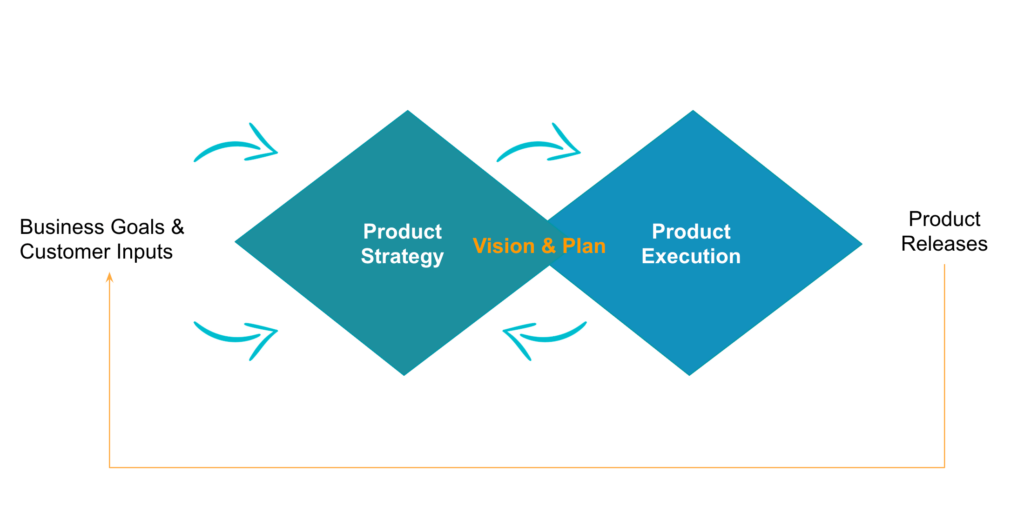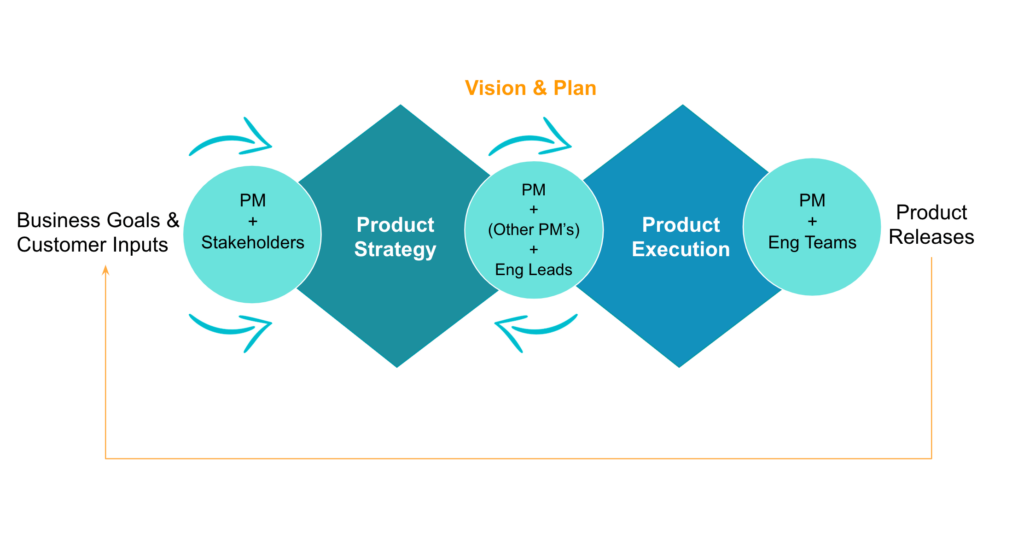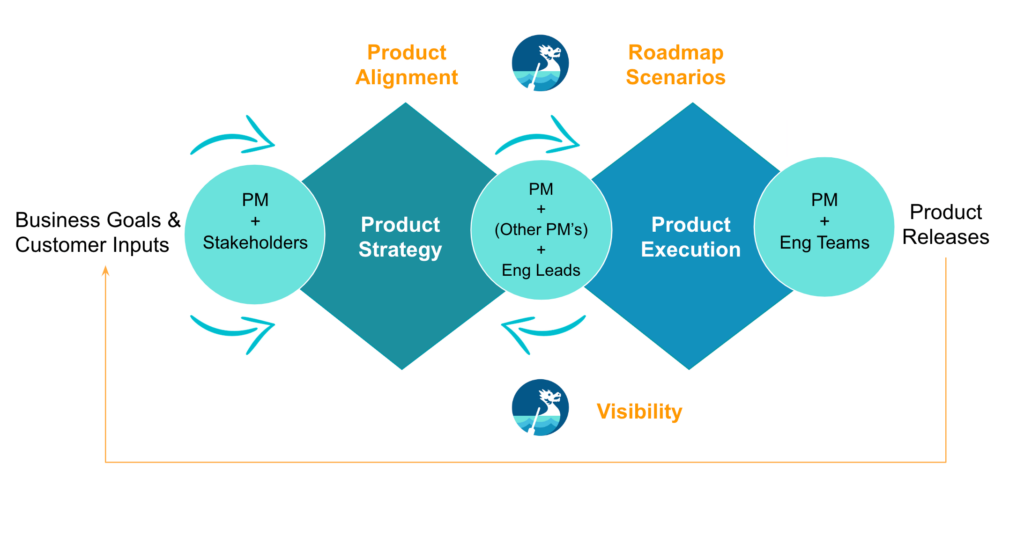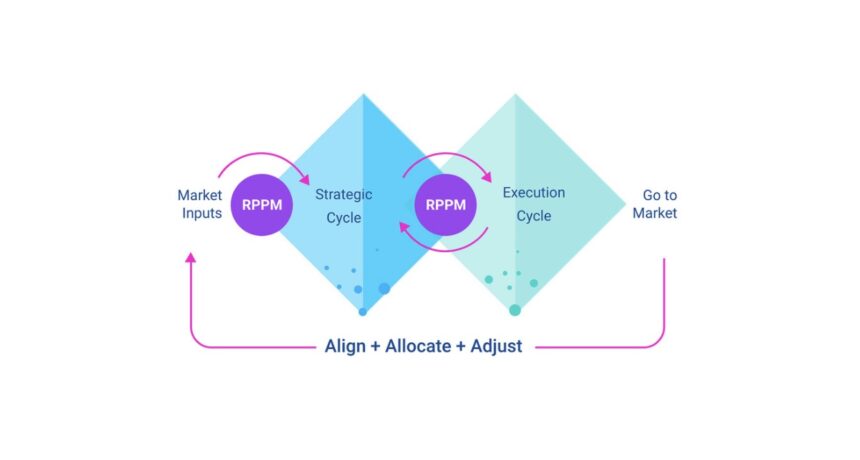In my conversations with startup founders and budding product leaders, the question often comes up, “Should we do annual strategic planning or quarterly alignment?” Similarly, they ask, “Is strategic planning only for large enterprises or can startups benefit from it too? What about product teams?”
The answer is a resounding YES.
Every company needs to define and execute strategies to achieve its vision and goals. The cadence of strategic planning and execution cycle set out to achieve this.
In this post, we’ll cover
- What is strategic planning (in the context of product teams)?
- How to lead strategic planning and execution effectively by using the “double diamond” method
- How to use “rolling” / responsive portfolio planning for dynamic companies
What is Strategic Planning?
Strategic planning is the process of prioritizing goals (OKRs), defining strategies, and allocating the resources essential to execute them.
Strategic planning enables the entire organization to decide on:
- What problems to solve (goals or OKRs) in the next 2-6 months,
- How to solve them (Strategies),
- What is needed to achieve them (Resources).
It’s a bigger-picture-process preceding and responding to the feature design, as well as the development process.
The Interconnected Double Diamond Strategy and Execution Process
As a key element of responsive portfolio management, the strategic planning and execution practice follows a directional yet iterative process requiring various participants to collaborate and move between “stages.” The “Double Diamond Design Process,” popularized by the UK Design Council, is also a good representation of this.

“A number of possible ideas are created (‘divergent thinking’) before refining and narrowing down to the best idea (‘convergent thinking’), and this can be represented by a diamond shape… the double diamond indicates that this happens twice… One of the greatest mistakes is to omit the left-hand diamond and end up solving the wrong problem.”
UK Design Council
During the double-diamond strategic execution process, product managers and various participants converge in key inflection points to move from one set of activities (diamond) to another.

Circle 1: Decide What Problems / Opportunities to Focus On
The key players in this phase include product managers and their key stakeholders/ leaders.
An example list of problems/ opportunities are:
- Grow market share against competition,
- invent new product to expand into adjacent market,
- improve monetization,
- and retention of current accounts.
Circle 2: Decide on How to Solve These Problems
This is a phase of brainstorming and analysis. The key players are individual product managers as well as their tech lead counterparts. The focus here is not to solve one item at a time, but to allocate time and resources in the best possible way using the high-level effort estimate (aka T-shirt size).
Continuing the example above: maybe the conversion issue is more urgent, but some are dependent on/related to the UX issues. Promises to a new customer or marquee customers may come in later, there may be a workaround for the admin tool crashes or billing issues could be done by outsourced agencies. These factors will also help sequence a plan for various teams.
Circle 3: Build the Features Planned During Circle 2
This is your typical Agile development process where scrum teams break out stories and ship them along the way. Sometimes new discoveries pop up as products are being built or partially released. As a result, you may need to check the rest of the plan to see if the changes are warranted. Furthermore, clear visibility on progress and comparison between predicted vs planned allocation will help with re-balance the portfolio.
As you can see, deciding on the right products to solve the right problems requires the dynamic prioritization of product features, assessment of resourcing/timing scenarios, as well as visibility of progress to all key participants. Moreover, it is an intensive exercise requiring the involvement of many functional leaders.
Rolling Strategic Planning
Traditionally, companies perform strategic planning on a three-year vision and one-year plan time horizon. Since the early 2000s, often with the adoption of agile practices and agile transformation, leading tech companies started to shorten the planning cycle to a 1-year plan with quarterly alignment.
However, in the 2020s, this frequency is no longer fast enough for the rate of change we experience today in a globally competitive tech space. Thus, a more frequent cadence is needed.
But how?
The predefined strategic planning frequency is mostly due to the cost of planning. There are a large number of people, mostly managers and leads involved, using off-sites followed by many meetings and spreadsheets. But these plans and their context often get lost when relaying them to teams.
With a purpose-built platform like Dragonboat, companies can now practice strategic planning on-demand with a rolling quarterly horizon. This enables them to responsively align goals, refine strategies, plan scenarios and assess tradeoffs quickly.

On-demand strategic planning enables companies to create strategies responsive to the changing needs of the market, build product plans based on the availability of resources, and remove preventable blockers like dependencies before team execution to accelerate time to market.




